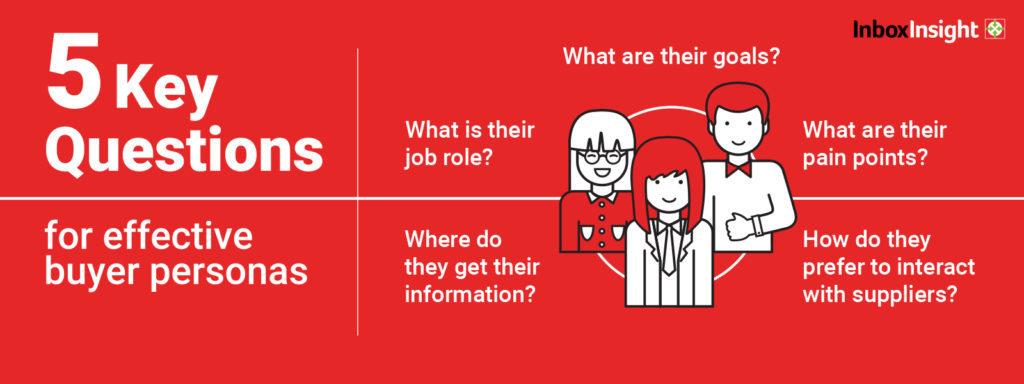Demand generation is an increasingly popular and effective way for businesses to approach B2B content marketing. It is a highly targeted process that focuses on maximizing results by defining and controlling every step of every campaign.
Customization and personalization of content, strategic distribution channels and nurturing leads that are likely to convert are the keys to a successful campaign. Yet achieving any of those elements is only possible with a sound demand generation strategy.
This step-by-step guide to B2B demand generation is a simple and clear checklist to creating and implementing a winning strategy that is measurable, manageable and generates regular new business opportunities.
Reading time: 9 minutes
Step 1: Choosing your campaign objective
No demand generation strategy is complete without a clear objective. Most demand generation tactics center on generating high-quality new leads to pass on to the sales team, which means attractive, engaging and nurturing from the top to the bottom of the marketing funnel. No doubt, creating a great demand generation strategy is challenging, but without one, you are less likely to be successful.
Businesses often find it easier to start creating content before they are ready. After all, some content has to be better than none, right? Actually, creating the wrong type of content won’t bring in the valuable potential customers that you need.
Successful demand generation campaigns should be highly targeted to get as many qualified leads as possible, while your sales and marketing teams need to work together to combine their knowledge of the market, the buyer and their internal processes. Your marketing team may know what makes the buyer tick, and the sales team know they have to get past three other decision makers to make a sale.
So, before you do anything else, you need to be able to set clear, realistic goals and be able to answer the following:
-
- Who buys your product or service? Is it Finance? Marketing?
- What size of company do you generate the most interest from? SMEs? Enterprises?
- Are you creating an international campaign or targeting specific countries or regions?
Step 2: Define your audience
Understanding what really motivates your prospect enables you to develop highly customized content that translates into sales.
Too many businesses churn out generic content that has wide reach but no effectiveness. This misuse of resources means you aren’t creating materials that your real customers will love.
To create targeted content, you need to know exactly who your customer is and what type of content they consume. And to do that, you need to get to grips with creating buyer personas – fictional characters that embody all of the tastes, characteristics, preferences and pain points, that your real life buyer identifies with.

Defining your audience this way is harder than it seems. You’ll likely be dealing with more than one type of person and therefore need more than one message or approach. To create personas effectively, the sales and marketing teams must work closely together. Both teams know the client from different vantage points and all aspects of the customer are vital to painting a complete picture. Make sure you answer these key questions:
-
- What is their job role? Include who they report to, how much decision making power they have and how senior they are.
- Where do they get their information? Where do they go for content? Biogs? Industry publications? Forums? Dedicated websites? Searches for whitepapers and authority content?
- What are their goals? To cut costs? Achieve efficiencies? Discover the best technologies? To stem losses? To impress senior management?
- What are their pain points? Time poor? Lack of resources? Poor productivity? Or one of the two biggest motivators – underperformance and serious failings?
- How do they prefer to interact with suppliers? Traditional meet, greet and sign? Research then contact?
A detailed buyer persona is a must, and you should try to go into as much detail as possible. If it helps, you can give your persona a name and physical characteristics, as this helps to keep focus when creating custom content.
Step 3: Create your content
Great content is the lifeblood of any solid demand generation efforts, but keeping it fresh and high quality at all times is a real challenge for many businesses, as is aligning content with business objectives.
Once you know who your audience is, the next stage is to start creating helpful content that they want to consume and that will result, hopefully, in a qualified lead at the bottom of your sales funnel. So how do you do this?
Generate ideas
Ideas need to be generated on a constant basis. Keep abreast of the latest news, views and innovations. Look at what your competitors are writing about and keep an eye on content from other industries too. Keep all ideas in one place so that whoever is responsible for creating or commissioning content can dip in and out when required.
Think about repurposing
Repurposing content maximises each idea. A great blog post can be expanded into a valuable eBook; a short customer testimonial can become an interesting case study based on helping them with their challenges. Each piece of content can be reimagined in countless ways acorss different channels, inlcuding your website and social profiles, creating a wider reach and greater longevity.
Make sure it’s personalized
Personalizing content is a very effective way of increasing conversion levels. HubSpot found that personalised calls-to-action increased conversion rates by 202% compared to default options. At the top of the funnel, you’re delivering to your buyer personas, but at the middle and bottom of the funnel, you have real people with names and real pain points. The more you know about a prospect, the more personalized you should aim to make their content.
Leverage the right creative skills
Utilizing the right creative skills is essential for creating good quality content. Writing, grammar and research skills are basic requirements. Remember that your content reflects the business and must create a good impression. Poorly researched and badly written content can harm your brand.
Efficiently manage your resources
It’s likely you’re going to require additional resources to what you have currently in-house. And this is a widely accepted approach to content creation. Whether you hire a member of staff or use an external agency, the latter is probably better value while you get your content marketing strategy up and running as you get access to relevant expertise and someone who knows how to align your content strategy with your goals without adding additional pressure to your workload.
Step 4: Optimize your distribution
The key to successful demand generation is ensuring that your ideal audience has access to your content. There are a number of ways to get your content into the hands of your prospects, all of which will require some form of investment, financial or otherwise.
Before deciding upon any content distribution channel, go back to your buyer personas and look at the places they go for content. If your prospects don’t use Facebook or Pinterest then focus your efforts on platforms they do use.
Start by building your strategy around the content distribution channels you can manage internally, such as:
-
- Email marketing – Using email marketing, you can send relevant content directly to your prospects. Make sure to personalize the emails and optimize the body copy and subject line to improve the chances of conversion.
- Industry websites – Publish content, or links to content, in the very places your prospect goes to find information specifically for their problem, including on your own website.
- Social media platforms – Linking to fresh content on your site is a great way to generate traffic, boost SEO and increase readership. This method also increases the visibility of your content in SERPs (Search Engine Result Pages) for longer term distribution.
- Landing page optimization – Creating SEO-optimized landing pages can capture prospects and draw them to your site. Use these pages as a gateway to more valuable content which as ebooks and whitepapers.
Once you have these channels up and running, you can being to think about more premium channels that may cost extra but reach a wider audience. Consider specialist publishers as they have specially curated audiences and can often help take your demand generation strategy further with multi-touch and lead nurturing.
For example, here at Inbox Insight, a leading B2B demand gen agency, we have a community of 4.1 million professionals that you wouldn’t otherwise have access to. Our demand generation programs are also carefully created around your specific campaign needs and so can be tailored to your requirements, ensuring you get the most out of your budget. Outsourcing your demand generation campaign this way also gives you access to expertise, experience and specialist knowledge.
Using a combination of both types of content distribution will ensure maximum reach for your content. Remember to continually analyze each channel for effectiveness and try out new channels. Drop the ones that don’t work well and focus on those that do.
Step 5: Align your lead nurturing
Nurturing your active leads is almost as important as acquiring them in the first place, but if you don’t have a nurture program in place, you could be missing out on significant revenue.
Lead scoring can be an effective tool for helping you focus on the leads that are engaging more with your content. It can also help you understand how your campaign is performing and where you may have gaps in your strategy.
You can then use marketing automation software to help monitor content effectiveness by measuring soft metrics like clicks, repeat visits, and movement from one piece of content to another.
Scoring leads based on engagement, or activity, can help you plan what action to take next. Consider using a scoring model from the very first point of contact as it can also rank content users by fit; are they in the right industry? The right position? Do they have the authority to purchase?
Heavily engaged content users may be ready to move to the next level, in which case you can create specialized content that supports their move to becoming a qualified lead. Less engaged users, with a lower score, may be persuadable with a different type of content.
Identifying those that meet the criteria for qualified leads early on means more effort and resources can
be focused on guiding their purchase journey, which will hopefully turn into a sale.
Step 6: Find ways to measure your success
If your demand generation campaign isn’t turning a healthy profit, you are either doing it wrong or measuring it wrong. The ROI of any marketing campaign can be tricky to measure, but unlike call center operations and direct mail, where sales can usually be clearly traced back to contact, there is rarely a straight line to be drawn between content consumption at the top of the sales funnel and a purchase at the bottom.
Discover the essential demand generation metrics and KPIs that B2B marketers rely on in our article.
Pipeline value
You know how many prospects you have at each level of your pipeline. You can calculate the value of each of those levels and work out what proportion of the top of the funnel works its way down to the middle and ultimately the bottom. If too few are making it from the top to the bottom, you can address any problems in the middle. If a large proportion of the mouth of the funnel end up in the middle but vanish before the bottom, you need to identify what the barrier is to the next level down, and then optimize content based on your findings at every stage.
Detailed data collection
Collating data at the top of the funnel is useful but often requires big effort for little return. By the time prospects reach the middle, it’s time to start asking for personal information. A database of mid-funnel prospects can be tied to actual sales at the bottom of the funnel relatively easily. If the proportions are too low, tweak the content until you get a better qualified lead rate.
Measuring with soft metrics
Clicks, reads, and impressions etc. can show you how popular different content is, although popularity is not necessarily an indicator of conversion power. Make sure to only use these softer metrics at the top of the funnel.
Over time you will have enough incoming data to create a holistic view of your demand generation campaigns. Those insights should help you reshape your strategy, fine tune your objectives and get to know your potential buyer even better.
Using this feedback to optimize your content and improve your ROI is the ultimate goal. Initial campaigns may seem like more effort than they’re worth but the long-term benefits outweigh the short-term resource investment.
Demand generation is more than just lead conversion
Demand generation is an effective and measurable way to make content marketing reap big results. It is an ‘always-on’ marketing process that demands commitment and investment if it is to attract and retain new clients, but it must be executed as part of a tightly controlled strategy with clearly defined objectives.
Capturing new prospects at the top of the funnel and moving them down to contact with a sales rep is the ultimate goal of most demand generation campaigns but it can only work if there is a regular flow of fresh leads into the top of the funnel.
Measuring content effectiveness and prospect engagement at every stage of the sales funnel, and acting on that information, creates a positive feedback loop that ensures your ROI grows over time.
Outsourcing some or all of the process to external marketing agencies and specialist digital publishers can take away some of the resource pressures and bring in the right expertise.






